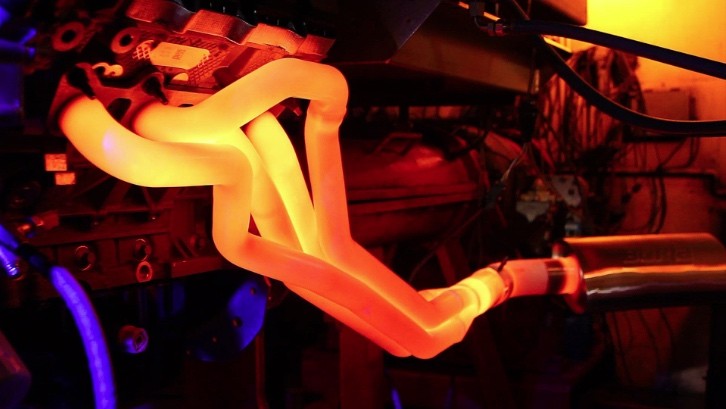Imagine that all the waste heat resulting from the exhaust pipe of your car could be turned into electricity and pumped back into the vehicle’s battery, say it were, in fact, a hybrid. That and a ton of other utilities could be assigned to a metal that is capable of converting heat into electrical power. Believe it or not, NASA has just patented one, and they are planning to launch a product based on this technology within the next three months.
NASA’s Jet Propulsion Laboratory (JPL) in Pasadena, California has just licensed patents on high-temperature thermoelectric materials to Evident Technologies, a research facility based in Troy, New York. One of these ground-breaking materials, Skutterudite, can be used for real power generation turning heat into electricity.
Considering the pace of the way the EV technology is developing, and the amount of cash Western governments are pouring into all sorts of echo-conscious programs, this discovery could turn the entire automotive industry upside down in less than a year. But let us look closer before we open the window and scream.
As the triggered nuclear explosions finally go off, successfully restarting the core’s rotation, the two scientists still alive and aboard the craft are left stranded. They do realize they can use the unobtainium shell to convert the heat and pressure from the wavefront to power the Virgil. It's how they escape the core, end up on the ocean floor, and eventually are rescued.
Both of these spacecraft use something called radioisotope thermoelectric generators (RTGs). In just a couple of words, it means they convert heat from a radioactive decay process into electricity. NASA’s Mars Curiosity rover also works with a similar system to get the power it needs.
The Agency claims that Evident Technologies will use technological advances from JPL in this area to develop commercial, high-temperature thermoelectric modules for terrestrial applications. Commercial products are not yet available, but it’s just a matter of time until they will. According to NASA’s statement, we’re about three months away from the first to hit the market.
Yep, three months.
Considering the pace of the way the EV technology is developing, and the amount of cash Western governments are pouring into all sorts of echo-conscious programs, this discovery could turn the entire automotive industry upside down in less than a year. But let us look closer before we open the window and scream.
Can Sci-Fi movie The Core be right?
Are these materials similar to “Unobtainium”? U-what? You know, that fictional indestructible metal that can withstand the heat and pressure of the core of Virgil, a nuclear-powered vessel that embarks on a journey to the center of the Earth. We’re talking about the 2003 American science fiction disaster movie, in which the survival of humanity depends on a small team of scientists. They are sent to the middle of Earth in an attempt to restart the rotation of the planet’s core.As the triggered nuclear explosions finally go off, successfully restarting the core’s rotation, the two scientists still alive and aboard the craft are left stranded. They do realize they can use the unobtainium shell to convert the heat and pressure from the wavefront to power the Virgil. It's how they escape the core, end up on the ocean floor, and eventually are rescued.
Again, is NASA’s new innovative material something similar? Maybe
Here’s what Thierry Caillat, the task leader for the thermoelectrics team at JPL said: “The licensed technology could be applied to convert heat into electricity in a number of waste heat recovery applications, including automobile exhaust and high-temperature industrial processes such as ceramic and glass processing plants.”Wait a minute, isn’t the use of thermoelectric power systems an old story?
Yes. And no. It is if you’re referring to what NASA’s Voyager 1 (the first spacecraft to enter interstellar space) and Voyager 2, are still using. They have been using it for more than 35 years, but it's not the same technology.Both of these spacecraft use something called radioisotope thermoelectric generators (RTGs). In just a couple of words, it means they convert heat from a radioactive decay process into electricity. NASA’s Mars Curiosity rover also works with a similar system to get the power it needs.
The Agency claims that Evident Technologies will use technological advances from JPL in this area to develop commercial, high-temperature thermoelectric modules for terrestrial applications. Commercial products are not yet available, but it’s just a matter of time until they will. According to NASA’s statement, we’re about three months away from the first to hit the market.
Yep, three months.

